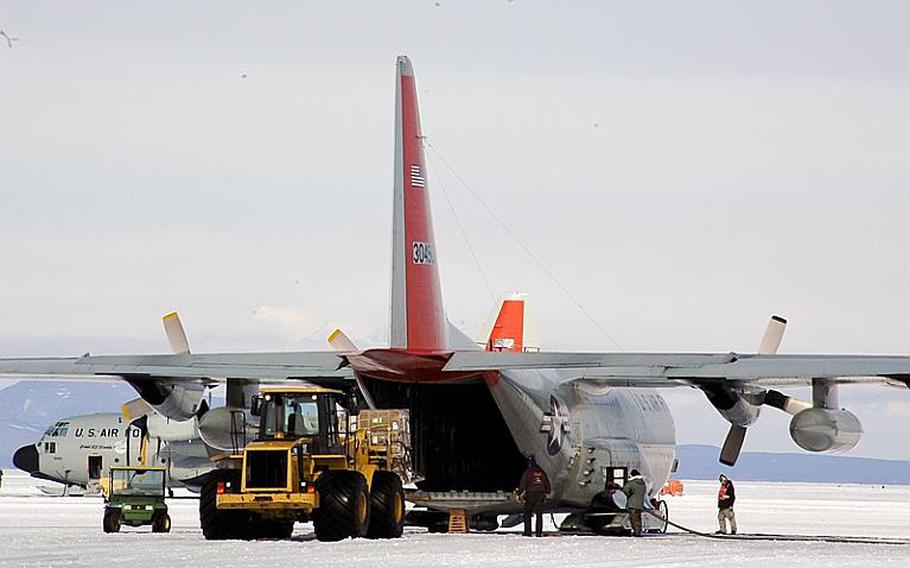Migration
US restarts Antarctic research
Stars and Stripes October 19, 2013

(Seth Robson/Stars and Stripes)
YOKOTA AIR BASE, Japan — U.S. Antarctic Program activities that were suspended due to the government shutdown will be restored to the maximum extent possible, according to the National Science Foundation.
The foundation, responsible for U.S. exploration and research in Antarctica, placed its bases there on “caretaker status” earlier this month as part of the shutdown. That meant an end to field research on the ice with only skeleton crews left on Antarctic bases and ships to ensure safety and preserve property.
“With the partial government shutdown now ended, the National Science Foundation (NSF) will restore the planned 2013-14 austral summer… activities to the maximum extent possible,” NSF said in a statement posted on the U.S. Antarctic Program website Thursday.
America’s main Antarctic base is McMurdo Station, with a summer population of about 1,100. The U.S. also has a permanent presence at the Amundsen-Scott South Pole Station and Palmer Station, on the Antarctic Peninsula.
Air Force flights between Christchurch, New Zealand and McMurdo will continue along with plans for ship resupply of bulk cargo, fuel and ice-breaking, the NSF statement said.
In a letter to scientists Friday, NSF’s Antarctic Sciences Section head, Scott Borg, said, research efforts will be set back, despite the efforts to restart the program.
“The 16-day interruption has already resulted in deferral of some projects and additional projects will be impacted,” he said.
Decisions about which research programs will restart will be made based on factors such as the need to maintain long-term data or make time-critical observations, the impact on young scientists and international or interagency partnerships, he said.
NSF will seek input from researchers as it makes its decisions, Borg said.
“We are committed to a rational process to restore as much of our original science plan as safely possible,” he said.